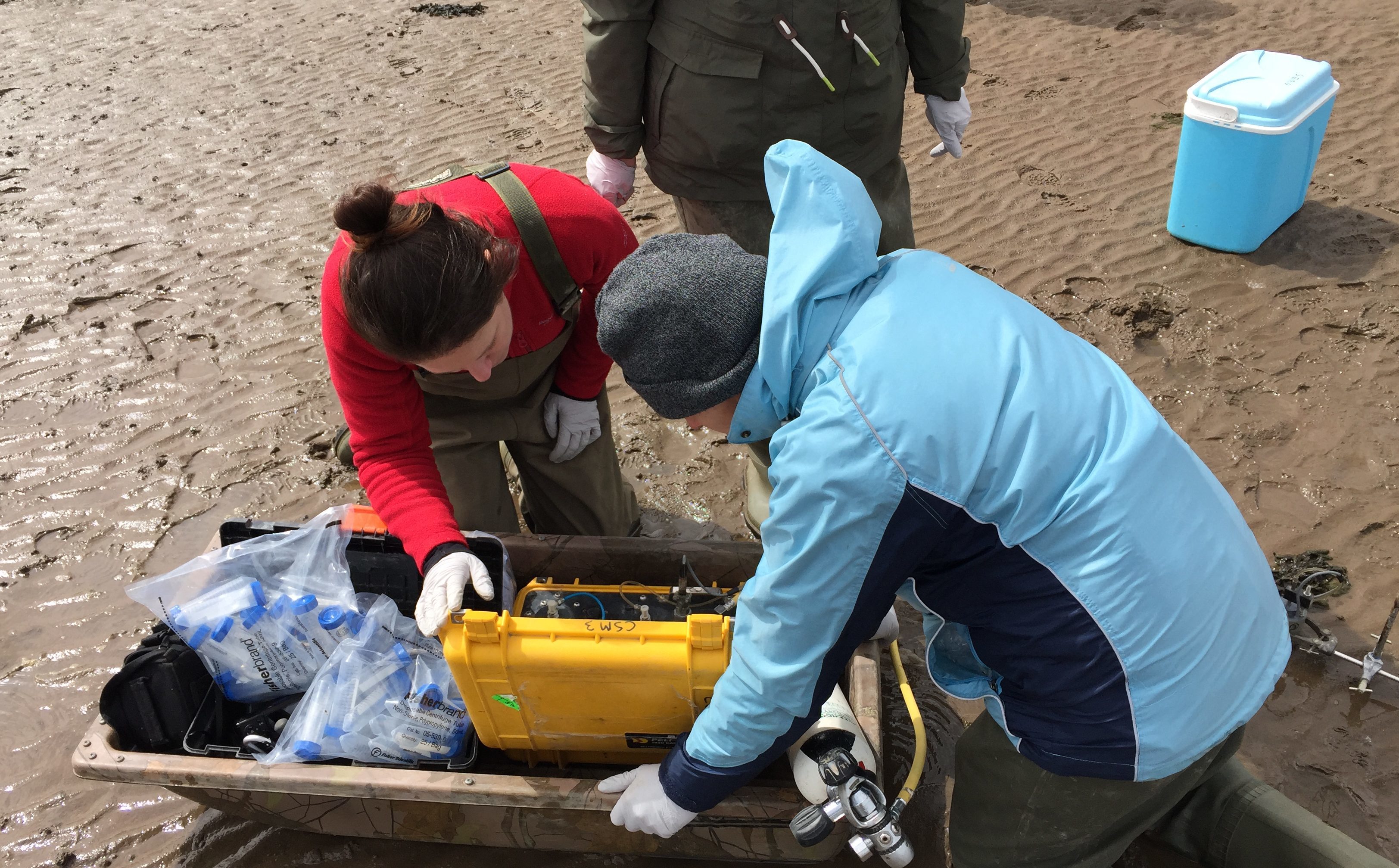The role bacteria could play in battling coastal erosion is under the microscope.
Pupils from Fife and Tayside are taking part in an Abertay University project which aims to discover more.
The timing is perfect — only days ago the potentially catastrophic impact of climate change and coastal erosion was revealed.
In all almost a fifth of Scotland’s coastline is at serious risk of erosion, putting a potential £400 million of developments in danger from rising sea levels.
Now Glenwood High pupil Dana Cheung, 16, and Sofiya Zyza, 18, from Brechin High are analysing samples from mud flats at Tentsmuir in north east Fife as part of microbiology analysis work.
Carried out in connection with wider coastal erosion exploration at the University of St Andrews, the project aims to analyse the properties of a certain type of bacteria known as pseudomonads.
Unusually, this has been found in sediment at the site.
Research will analyse how these bacteria and other microbes — such as algae — are contributing to cementing sandbanks in the tidal zone.
The team is using high pressure water jets to find out its resistance to wave power.
Dr Andrew Spiers, supervising the project at Abertay with the assistance of visiting student Rebecca Rickart from Germany, explained pseudomonads would more commonly be found in plants and soil than in beach sediment.
That’s why they merited further investigation.
“One of the things we are doing is looking at how well connected the sand is.
“The top layer has so many microbes on it, including algae, that all of the proteins and polymers act as a sort of glue that holds it all together.”
He said bacterial growth could be contributing to keeping the sand in place.
“So we are interested to see how different or similar this sediment is from normal soil and to ask whether some of the polymers which act as the cement may be expressed by these bacteria,” Dr Spiers added.
The pupils are at Abertay as part of a Nuffield research placement over the summer.
The wider project is looking at coastal erosion in a fuller light including the development of seawall defences.
| . |









